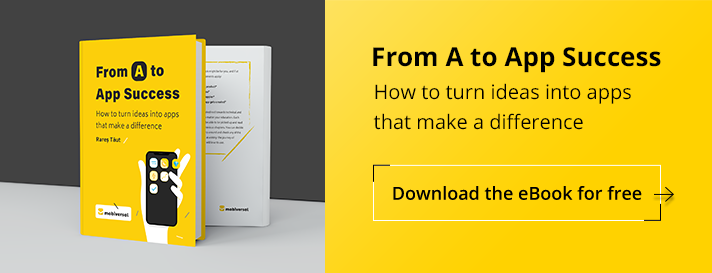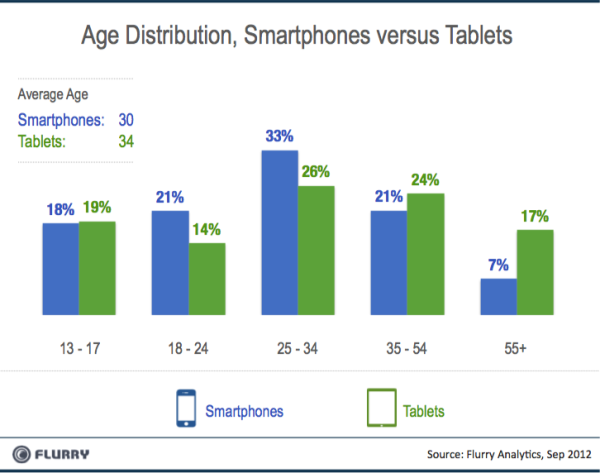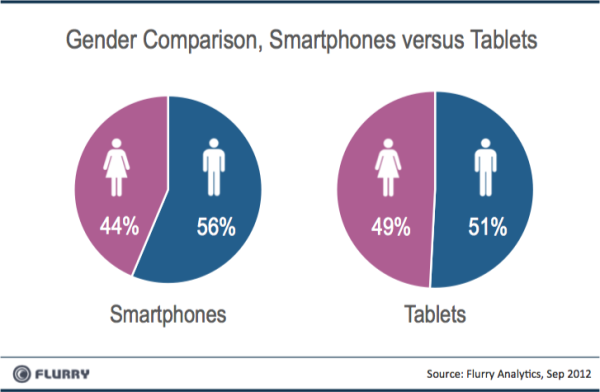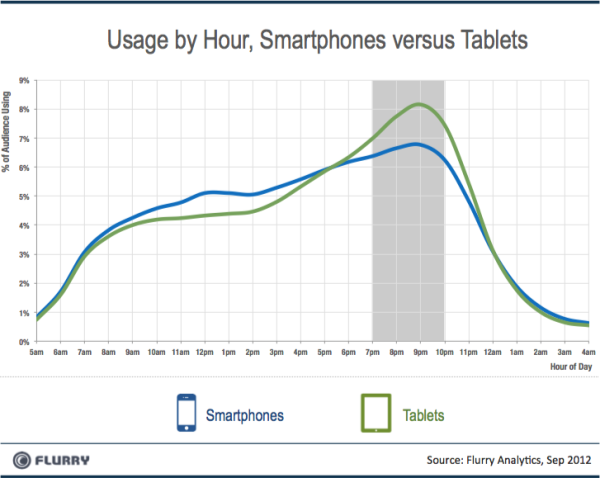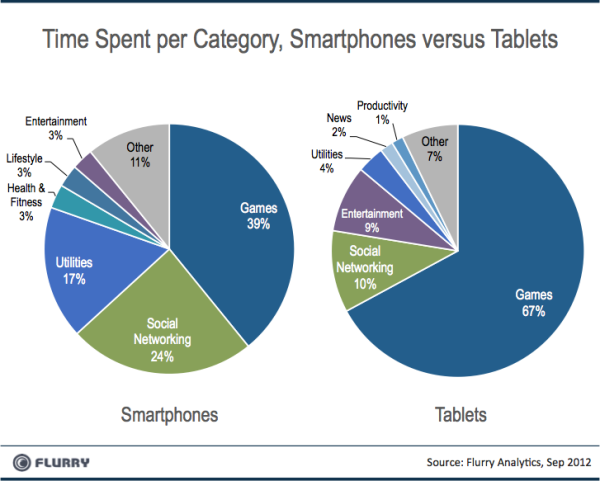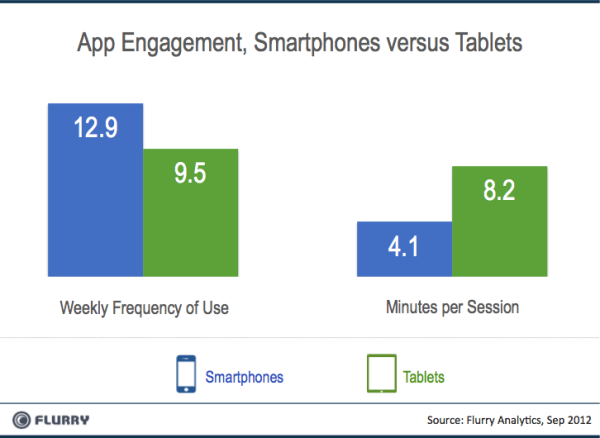Smartphones or Tablets For Building Your App?
According to Apple’s latest earnings call, more than one out of every three smart devices sold during the last quarter was a tablet, a total of 14 million iPads versus 26.9 million iPhones. Apple also announced the iPad Mini and if you add to that the Nexus 7 and Nexus 10 from Google, it will surely be a busy holiday season for the tablet market.
To help you reach a decision whether to launch your app for smartphones or for tablets, we’ll dive into the latest analytics from Flurry: age, gender, time of day usage, category of usage and engagement metrics. When looking at the age distribution, Flurry analyzed a pool of 30 million users. Smartphone users are younger than tablet users, 30 versus 34 years of age, with almost three quarters of smartphone users, 34 years of age or younger, while more than two thirds of tablet users are 25 years or older.
If your app is targeted toward a specific gender, there’s quite a good balance between men and women, with a slightly bigger adoption of tablets by women.
When looking at how consumers allocate their time using apps across a day, you’ll observe for tablets a big increase during 7 pm – 10 pm interval, when people are usually at home, so tablets seem to take out of TV time or are used in combination with the big screen.
The most interesting stuff for me is to see the time spent across app categories between smartphones and tablets. The biggest categories on smartphones are Games, Social Networking and Utilities with 80% of the time, while on tablets users spend just on Games 67% of their time. So if you are considering building a game, the fact that games usage is 71% bigger on tablets than on smartphones should be something worth noticing.
In a recent article on TechCrunch, game designer Tadhg Kelly brilliantly pointed out the key differences between tablets and smartphones, from interaction point of view: “The kinds of interaction that tend to be fun within the tablet environment focus around drawing, multi-touch and direct manipulation of on-screen elements, whereas mobile is more about selecting and tilting. Tablets are also more comfortable to use in landscape mode than portrait (mobile is the reverse), and have more concentrated use-cases: In mobile gaming an individual game session should fit within the period of time spent waiting for a bus, but tablets are often used for sit-down-and-play sessions.”
Tablets are different from smartphones even considering the way we’re holding them in our hands, or when looking at app prices, almost double on tablets. Flurry also puts a light on session length, double on tablets than on smartphones.
So depending on the type of app you wanna build, you’ll have to take in consideration all of the above aspects.
